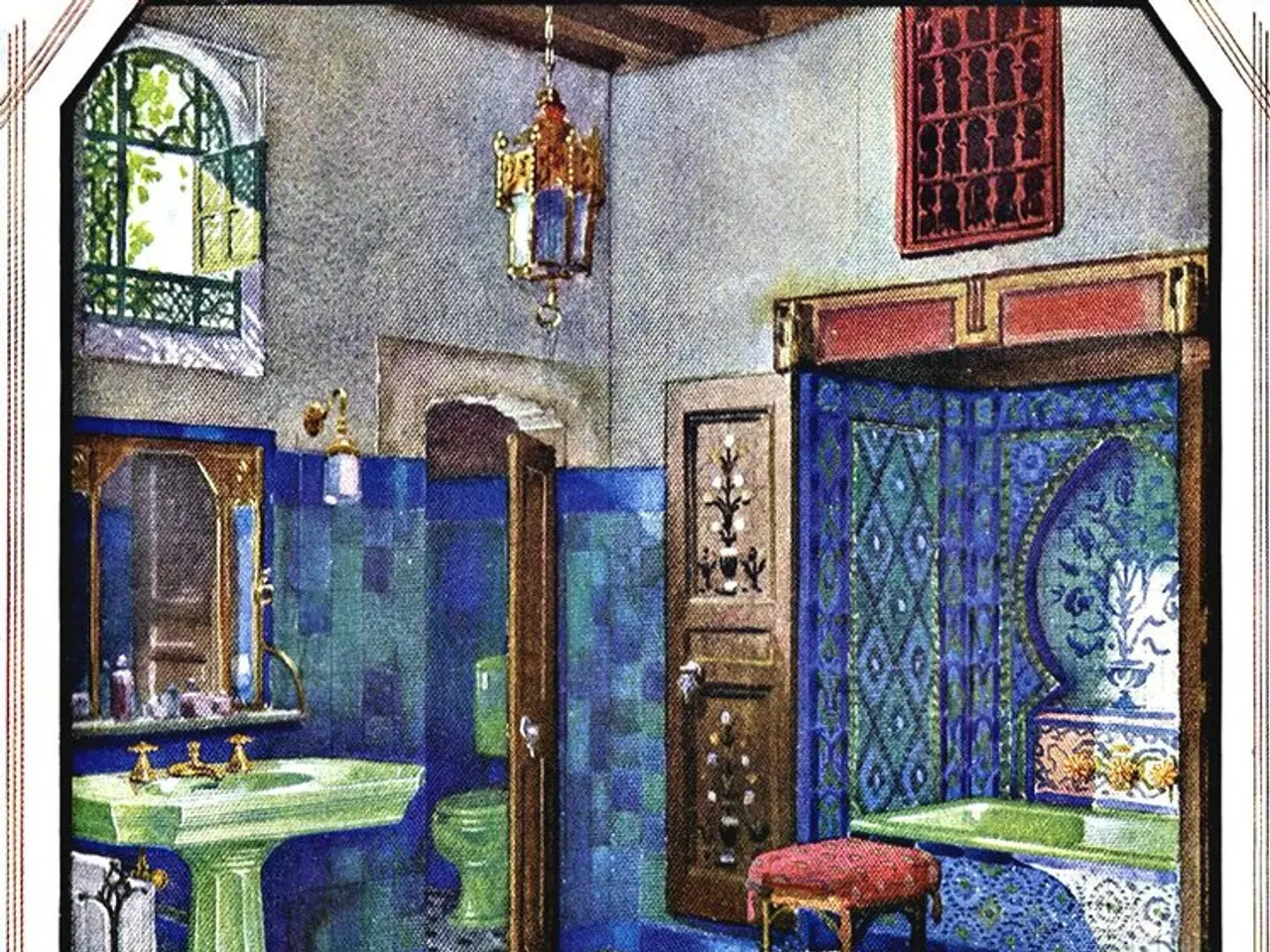"As a Professional in Water Feature Design, Here Are Essential Insights for Crafting a 'Rill' in Your Personal Garden"
Incorporating a rill into a domestic garden setting can create a tranquil oasis that adds visual interest, movement, and the soothing sound of trickling water. A rill is a manmade narrow water channel designed to transport water from one place to another, with origins in traditional garden design but now reimagined for modern spaces.
The design process for a rill is meticulous, involving both functional and aesthetic considerations. Designers first determine the water source and the intended path or flow direction of the water channel, ensuring it leads the viewer's eye through the garden space effectively.
Unlike off-the-shelf garden furniture, rills require bespoke design to balance the water volume, flow rate, and containment needs. The bottom of the channel must have a sufficiently sized reservoir or tank to hold the volume of water when the pump is off, preventing overflow.
Aesthetic choices play a significant role in rill design, with designers deciding on the style, shape (often geometric and modern), materials, and how the rill integrates with surrounding elements like ponds, planting, or paving. Proper coordination with other garden features enhances the rill's role as a sensory, tranquil focal point or pathway connector.
Since natural flowing sources are rare in modern domestic gardens, an electric pump typically recirculates water from the rill's lowest point back to the top, maintaining continuous flow and the characteristic sound of trickling water.
The rill's materials can vary, including stone, cement, and modern hardscaping materials. Darker stones like slate or granite are often used for rills as they create a mirror effect on the water. The vehicle through which the water flows can help create a unique design, such as a faux waterfall delivered by a garden statue.
The art of rill design was perfected in Middle Eastern countries where water was scarce, and it continues to evolve today. With the help of a water feature designer, the creation of a rill can reflect the interior design style of a home, making it a significant addition to a home that has a deep-rooted history.
Ideally, a garden for a rill should have a minimal slope, a space for a reservoir tank, pump, and filter, a power supply, and a water feed for an automatic top-up. The introduction of outdoor lighting, such as LED waterproof lighting, can enhance the look of a rill, especially when it reflects the sky and leads away from a viewing point, creating a visually pleasing and serene scene.
In a domestic garden setting, a rill can make the space feel more private and serene, providing a perfect spot for relaxation and contemplation. Furthermore, a rill can fulfill a functional role, such as delivering water to multiple farmers in a community, demonstrating its versatility and enduring appeal.
[1] "Rills: The Modern Water Feature for Your Garden," Gardening Today, 2021. [3] "Designing a Rill: A Comprehensive Guide," Garden Design Journal, 2020.
- The art of rill design, originally perfected in Middle Eastern countries, can now be modernized for contemporary domestic gardens, creating a tranquil oasis that adds visual interest, movement, and the soothing sound of trickling water.
- Aesthetic choices in rill design are essential, with designers choosing materials like darker stones that create a mirror effect, geometrical shapes, and integrating the rill with surrounding elements such as ponds, planting, or paving to enhance its sensory appeal.
- A rill's design process is meticulous, involving functional considerations like determining the water source, the intended path or flow direction, and ensuring it has a sufficient reservoir or tank, pump, and filter for continuous water flow.
- As a focal point or pathway connector in a garden setting, a rill can reflect the home's interior design style, making it a significant addition to a home with a deep-rooted history while simultaneously serving a functional role, such as delivering water to multiple farmers in a community.




